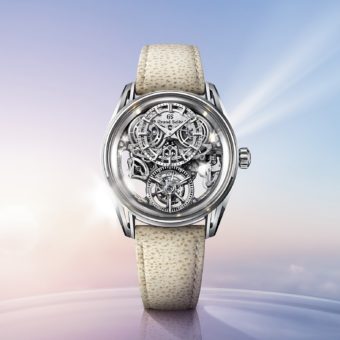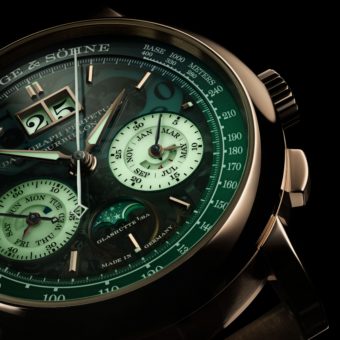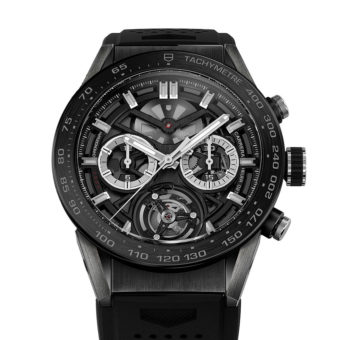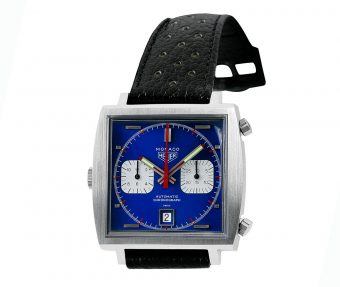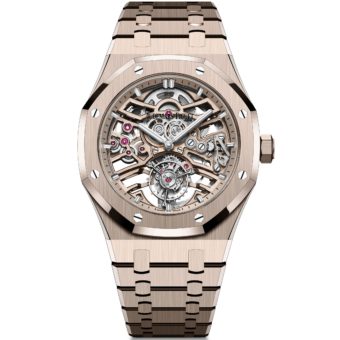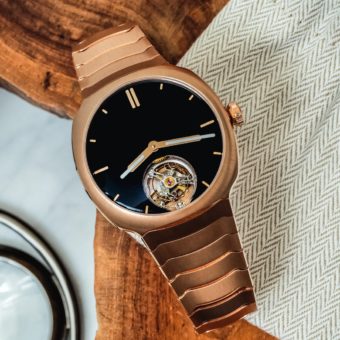This article was originally published in the July/August 2022 Issue of the WatchTime print magazine.
While still prestigious, the tourbillon has also become somewhat of a staple. Every ambitious and self-respecting brand seems to have at least one in its collection. But what about a brand that makes only watches with tourbillons? For Purnell, this complication is a way of life, so firmly believing in its precious nature that they don’t do anything else, but they do like to do it differently.
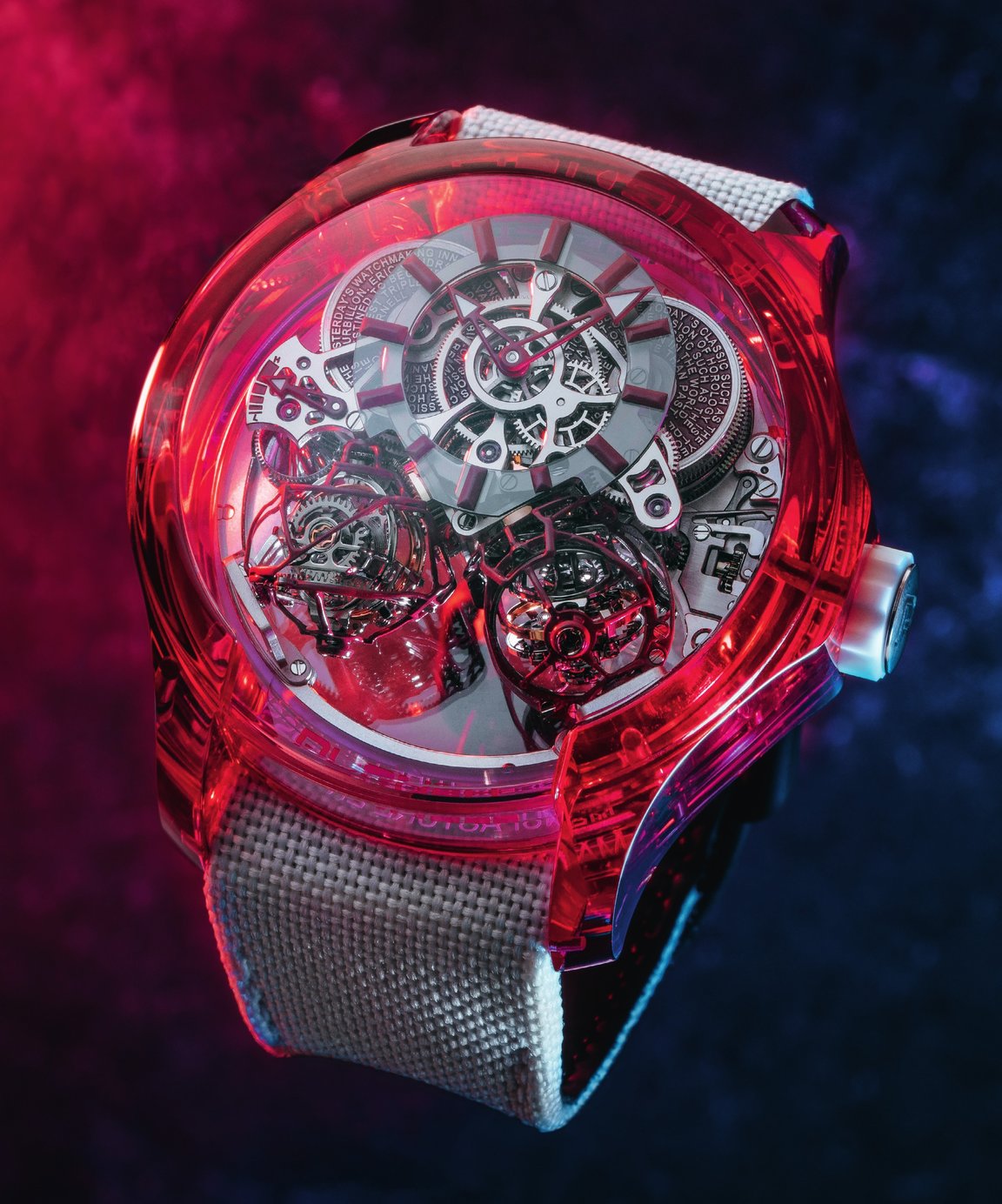
Purnell started in 2006 when Jonathan Purnell launched the very first tourbillon under his own name. The inspiration to do so came from his grandfather, Cecil Purnell, a soldier for the British armed forces, fighting on the brutal battlefields in France during World War I. After being wounded in battle, he was transported to Besançon to heal. This is where bad luck turned into good fortune, as this beautiful city, quite close to the border with Switzerland, is known as the center of French watchmaking. This had quite an impact on Cecil Purnell, and he trained there to become a watchmaker. One of the people he admired was Abraham-Louis Breguet, in particular, his ingenuity in developing a device to counter the effect of gravity on the precision of a movement: the tourbillon. While Cecil Purnell never made a watch with a tourbillon of his own, his grandson continued the quest on his behalf.
He did so with passion and determination, developing 13 tourbillon movements in nearly the same number of years. This passion is shared by the brand’s current CEO, Maurizio Mazzocchi, a veteran of the watch industry himself. He has been a brand manager at Omega and Blancpain, managing director at Roger Dubuis, and CEO at Jacob & Co. Mazzocchi is a rare combination of being a dreamer and a realist at the same time. In order for Purnell to reach its full potential, he knew that he had to push the boundaries of the tourbillon further than anybody had done before. Making dreams of such a complex timepiece a reality is a challenge for any brand, let alone one of the relatively modest size of Purnell. Here the realist takes over, and rather than taking the expensive route of building a manufacture of its own, Mazzocchi prefers to team up with the best in the business.

One of them is Eric Coudray, an expert in multi-axis tourbillons whose name became more widely known after the launch of the Jaeger-LeCoultre Gyrotourbillon in 2004 and, more recently, the MB&F Thunderdome. He made a vow, together with Mazzocchi, to push watchmaking and manufacturing capabilities to their limits in order to pursue ultimate performance. The result of this collaboration was the Purnell Escape II, fitted with not one but two spherical tourbillons. It results in a large but charismatic watch that is in constant motion. The dance of the two multi-axis tourbillons is mesmerizing, and its complexity is daunting. The two tourbillons turn in opposite directions and are connected through a differential system that creates an average rate to obtain the highest precision. While more traditional tourbillons often make a full rotation in 60 seconds, the ones in the Purnell are substantially faster. The outer cage needs 30 seconds to go around, the secondary cage 16 seconds, and the inner cage only 8. When the torque of the mainspring barrels is getting so low that it affects the precision of the tourbillons, one of them automatically stops while the other continues to run. When the power reserve further drops to the point that this negatively influences the tourbillon still running, the movement stops altogether.

In many ways, the Escape II is a horological top athlete, not only in its quest for ultimate performance but also in the strength needed to get there. As Mazzocchi explains, “it is the most powerful movement in the market. With our 6 barrels, we generate 32 Newton millimeters of torque. It is like a car never going under 400 km/hour.” In the quest for ultimate performance, Mazzocchi also looks beyond the tourbillon. “Precision cannot derive solely from the tourbillon device. It is like the heart; an entire body will improve the heart, and an entire movement and gearing will improve the precision of the escapement.”
While in many ways a treat in a technical sense, any Purnell has to be more than that. Creativity is another aspect highly regarded by the company. They express this in unique ways, and one of them is playing with materials. While Purnell crafts its timepieces in gold and platinum, they also like to experiment with microfibers and carbon. They even offer one in a transparent sapphire case, perfect for admiring its complex movement from nearly all angles. Even more ambitious was the recently introduced Escape II with a sapphire case in “Hancock Red.” This term comes from one of the most famous red diamonds that sold at Christie’s in New York in 1987 for $880,000, making it the most expensive diamond per carat, a title that it held for 20 years. This same deep, rich color red can be found in the sapphire case of the Escape II. Achieving this hue evenly in a sapphire block large enough to cut a watch case out of is incredibly difficult. It is almost more chance than science to create it, explaining its rarity.

To further increase the visual attraction, Purnell likes to coat the outer cage of its triple-axis tourbillon. This dash of color allows them to create a pleasant contrast, highlighting the different functions of the watch. Purnell also takes full advantage of the rapid motions of the cages, which house the multi-axis tourbillons. By setting them with brilliant-cut gemstones, they create a natural light show. The constant movement of the stones makes it so light enters them at various angles, allowing them to display their natural fire and scintillation. While a great idea, executing it is also like walking the high wire, as the tourbillon cage is rather delicate. This is yet another way of pushing existing boundaries just a bit further.
Next to the Escape II, Purnell also offers the Escape Primo. This model is fitted with only one multi-axis tourbillon, so it is an entirely different proposition. While it goes perhaps a bit far to call this a matter of “less is more,” it does put much more focus on the high-velocity Spherion cages. The tripleaxis tourbillon doesn’t have to fight for attention with a sibling and has more space around it, as the Escape Primo shares the case with the Escape II. This timepiece is more of an ode to an ingenious device, dedicated to improving the precision of the mechanical watch, with much of the same passion as that of Abraham-Louis Breguet when he invented the tourbillon.

To shine the light on the brand to a broader public, Purnell is not only the official timekeeper of AS Monaco but also the official partner of the Ballon d’Or, the most prestigious award in the world of soccer. At the 65th edition, winners Lionel Messi and Alexia Putellas were not only given the coveted trophy but also their own Purnell Escape Ballon d’Or. For these timepieces, the triple-axis tourbillon is captured in a gold soccer ball, matching the case material. It makes the watch fun while maintaining its prestige, another hallmark of Purnell. Despite their fierce dedication to the tourbillon, they have made sure that they don’t take things too seriously either. This allows them to explore areas in which tourbillons usually don’t venture, as it gives their timepieces a casual flair that suits the most prestigious form of escapement rather well.
To learn more about Purnell, click here, and to subscribe to the WatchTime print magazine, click here.

